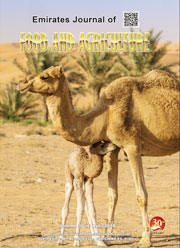INCORPORATING FODDER BEET BETA VULGARIS CV. MAJORAL IN NILE TILAPIA OREOCHROMIS NILOTICUS (L.) DIET
DOI:
https://doi.org/10.9755/ejfa.v12i1.5143Keywords:
Carbohydrates, fodder beet, fish, tilapia, feedAbstract
Four approximately isoenergetic isonitrogenous diets containing 0, 150, 300 and 510 g kg-1 fodder beet as a replacement for dietary corn in Oreochromis niloticus (Linnaeus) fingerling commercial feed were fed to triplicate groups (15 fish each) of fingerlings (2.46 g) for 9 weeks in a re-circulating system. Fish were fed three times a day to satiation. Tilapia weight gain, feed conversion, specific growth rate and protein efficiency ratio were similar in fish fed diets containing 0 (control), 150 and 300 g kg-1 fodder beet (P < 0.05). Proximate carcass composition was affected (P < 0.05) by replacing dietary corn with fodder beet. As the level of fodder beet increased, fish body moisture was increased and fat reduced. Further increase in fodder beet inclusion to 510 g kg-1 had a negative effect on fish growth performance. In conclusion, replacing corn with fodder beet in tilapia feed up to 300 g kg-1 would produce growth parameters similar to those fed corn (control groups).










 .
. 